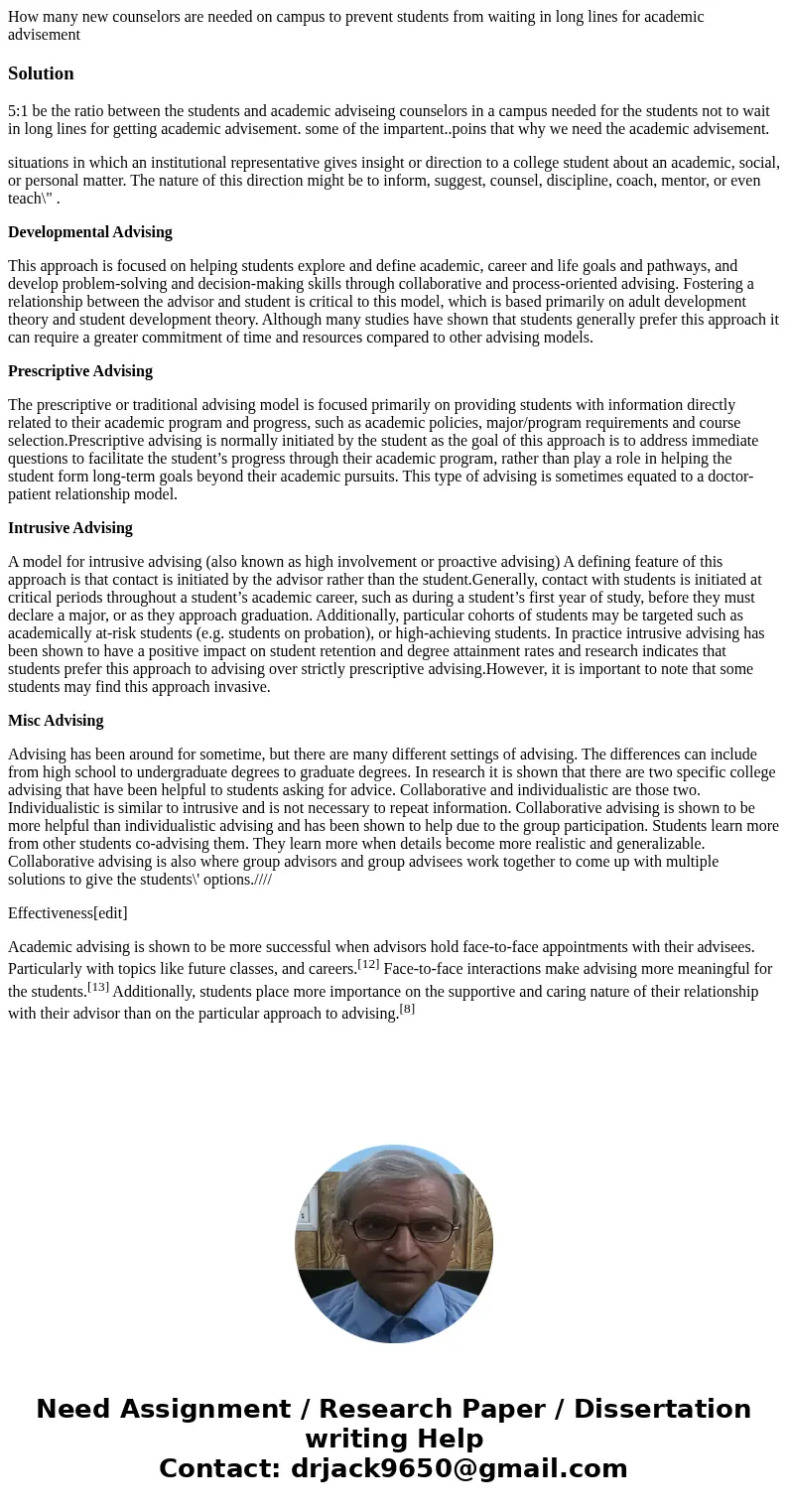How many new counselors are needed on campus to prevent stud
Solution
5:1 be the ratio between the students and academic adviseing counselors in a campus needed for the students not to wait in long lines for getting academic advisement. some of the impartent..poins that why we need the academic advisement.
situations in which an institutional representative gives insight or direction to a college student about an academic, social, or personal matter. The nature of this direction might be to inform, suggest, counsel, discipline, coach, mentor, or even teach\" .
Developmental Advising
This approach is focused on helping students explore and define academic, career and life goals and pathways, and develop problem-solving and decision-making skills through collaborative and process-oriented advising. Fostering a relationship between the advisor and student is critical to this model, which is based primarily on adult development theory and student development theory. Although many studies have shown that students generally prefer this approach it can require a greater commitment of time and resources compared to other advising models.
Prescriptive Advising
The prescriptive or traditional advising model is focused primarily on providing students with information directly related to their academic program and progress, such as academic policies, major/program requirements and course selection.Prescriptive advising is normally initiated by the student as the goal of this approach is to address immediate questions to facilitate the student’s progress through their academic program, rather than play a role in helping the student form long-term goals beyond their academic pursuits. This type of advising is sometimes equated to a doctor-patient relationship model.
Intrusive Advising
A model for intrusive advising (also known as high involvement or proactive advising) A defining feature of this approach is that contact is initiated by the advisor rather than the student.Generally, contact with students is initiated at critical periods throughout a student’s academic career, such as during a student’s first year of study, before they must declare a major, or as they approach graduation. Additionally, particular cohorts of students may be targeted such as academically at-risk students (e.g. students on probation), or high-achieving students. In practice intrusive advising has been shown to have a positive impact on student retention and degree attainment rates and research indicates that students prefer this approach to advising over strictly prescriptive advising.However, it is important to note that some students may find this approach invasive.
Misc Advising
Advising has been around for sometime, but there are many different settings of advising. The differences can include from high school to undergraduate degrees to graduate degrees. In research it is shown that there are two specific college advising that have been helpful to students asking for advice. Collaborative and individualistic are those two. Individualistic is similar to intrusive and is not necessary to repeat information. Collaborative advising is shown to be more helpful than individualistic advising and has been shown to help due to the group participation. Students learn more from other students co-advising them. They learn more when details become more realistic and generalizable. Collaborative advising is also where group advisors and group advisees work together to come up with multiple solutions to give the students\' options.////
Effectiveness[edit]
Academic advising is shown to be more successful when advisors hold face-to-face appointments with their advisees. Particularly with topics like future classes, and careers.[12] Face-to-face interactions make advising more meaningful for the students.[13] Additionally, students place more importance on the supportive and caring nature of their relationship with their advisor than on the particular approach to advising.[8]

 Homework Sourse
Homework Sourse